Invented by Gene Allen Hofer, David Macedon, Zebra Technologies Corp
The market for antimicrobial coatings for identification devices is expected to grow significantly in the coming years. According to a report by MarketsandMarkets, the global antimicrobial coatings market is projected to reach $5.6 billion by 2025, with a compound annual growth rate of 12.1% from 2020 to 2025. The report notes that the healthcare sector is the largest end-user of antimicrobial coatings, but other industries, such as food and beverage, packaging, and textiles, are also adopting these coatings.
One of the key drivers of the market for antimicrobial coatings for identification devices is the increasing awareness of the importance of infection control. With the ongoing COVID-19 pandemic, there has been a heightened focus on preventing the spread of disease, and antimicrobial coatings offer a simple and effective way to do so. In addition, the growing use of identification devices in various industries, such as hospitality and retail, is also contributing to the demand for these coatings.
There are several types of antimicrobial coatings available for identification devices, including silver-based coatings, copper-based coatings, and quaternary ammonium compounds (QACs). Each type has its own advantages and disadvantages, and the choice of coating will depend on factors such as the intended use of the device, the level of antimicrobial protection required, and cost considerations.
One of the challenges facing the market for antimicrobial coatings for identification devices is the need for regular cleaning and maintenance. While these coatings can help to prevent the growth of microorganisms, they are not a substitute for proper cleaning and disinfection. In addition, there is a risk that over-reliance on antimicrobial coatings could lead to the development of antimicrobial resistance, which is a growing concern in the healthcare industry.
Overall, the market for antimicrobial coatings for identification devices is expected to continue to grow in the coming years, driven by increasing awareness of the importance of infection control and the growing use of identification devices in various industries. As new technologies and materials are developed, it is likely that we will see even more effective and efficient antimicrobial coatings in the future.
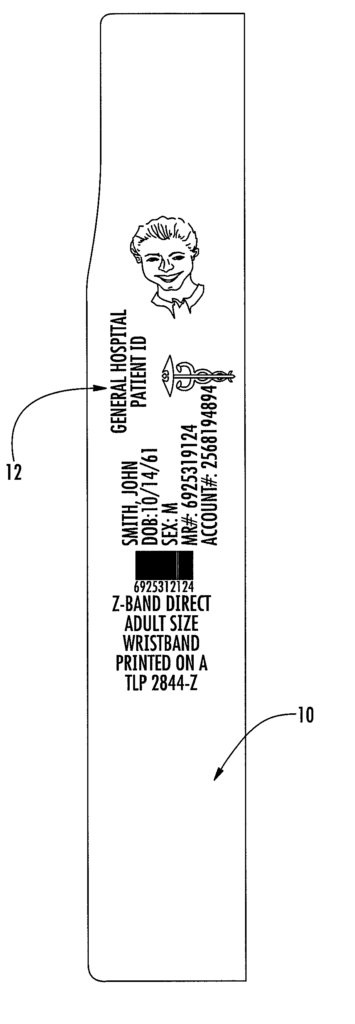
The Zebra Technologies Corp invention works as follows
An Identification Device that Combines an Antimicrobial Coating with a Printable Substrate.” The invention, for example, includes a wristband having a facestock supporting indicia that are applied (such as by thermal transfer printing) on or through an antimicrobial coating. The antimicrobial coating is preferably applied as an outermost layer. It can be bonded with thermal transfer inks or support direct thermal printing through a chemically-receptive layer. The antimicrobial layer includes antimicrobial and varnish compounds, such as silver zeolite compounds that are configured to react with moisture to release microbial disinfectant. The wristband should be a hospital wristband with on-site printed identification for a particular patient.
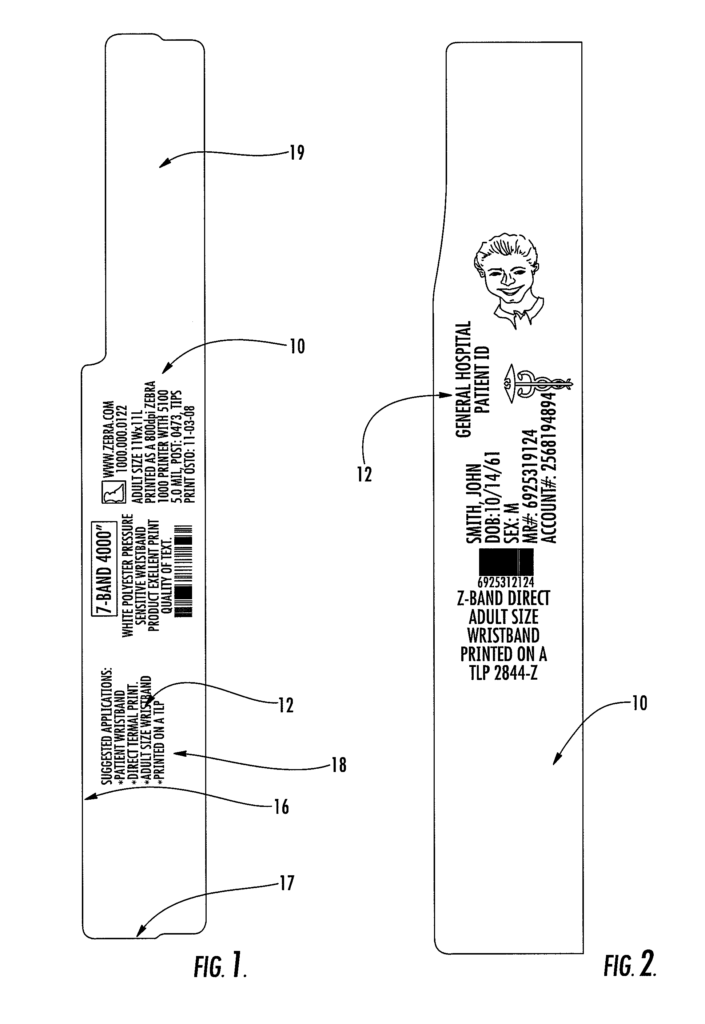
Background for Antimicrobial coating for identification devices
The present invention provides an identification device which combines a printed substrate with an antimicrobial layer. This addresses the needs above and also achieves other benefits. The invention, for example, includes a wristband having a facestock that supports indicia. These are printed on the antimicrobial layer (e.g. through thermal transfer printing), or through it (e.g. through direct thermal print). The antimicrobial coating is preferably applied as an outermost layer. It can be bonded with thermal transfer inks or support direct thermal printing on a chemically-receptive layer. The antimicrobial layer includes antimicrobial and varnish compounds, such as silver zeolite that reacts with moisture to release a controlled amount of disinfectant. The wristband should be a hospital band with on-site identification for the patient.
In one embodiment of the invention, a medical device is coated with antimicrobial compounds and printed indicia. The indicia can be printed either directly on a printable varnish that contains antimicrobial components, or transferred through a UV-curable overvarnish which also contains antimicrobial substances and printed onto an image chemical layer.
In one aspect, the wristband is the medical device and the indicia represent identifying information for a particular patient. The wristband includes a facestock, a protective coating over the facestock, an antimicrobial layer over the protective surface, and identifying indicators supported or allowed by the device.
The wristband in another aspect is rectangular with two opposing long and short edges. The face stock is divided into two parts, the body portion which supports the antimicrobial and indicia, and the connector portion which is designed to be attached to the body section when it encircles a wrist.
Connectors can be used to attach the connector portion to body, for example a clip or clasp that has an insert to pass through the communication holes between the connector and body portions. A crack and peel connector can be used instead, which includes an adhesive patch that is covered by a cover. The adhesive patch is revealed when the cover is removed. It has a pressure-sensitive nature and adheres both ends of the facestock together, when the ends of the wristband are glued.
The present invention offers many benefits. Medical devices (such a wristband) with an antimicrobial and indicia coating of the present invention can be used to treat potentially contaminated environments, which require variable information such as identification. In a hospital setting, for example, identification wristbands with indicia such as the patient’s name, gender, and medical background could be given to patients. The patient can be identified, and the antimicrobial layer protects them from harmful bacteria that may worsen their medical condition.
BRIEF DESCRIPTION ABOUT THE VIEWS OF MANY DRAWINGS
Having described the invention in general terms we will now refer to the accompanying drawings. These drawings are not necessarily drawn at scale and contain:
FIG. “FIG.
FIG. “FIG.
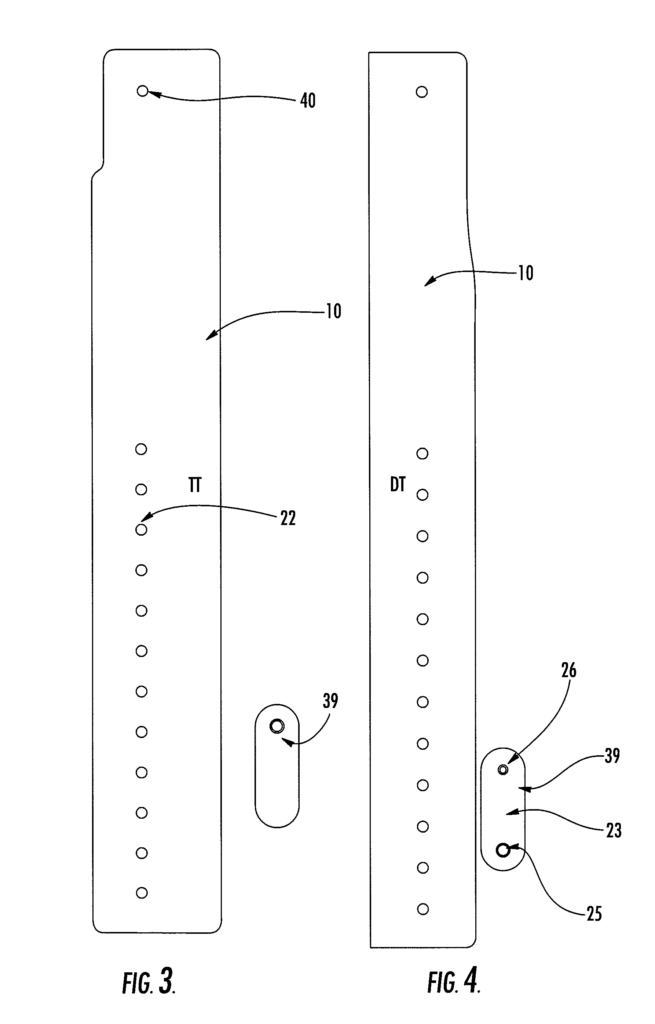
FIG. “FIG.
FIG. “FIG.
FIG. “FIG. “Figure 1 shows an antimicrobial layer of varnish and the print indicia on the wristband.
FIG. “FIG.
FIG. “FIG.
FIG. “FIG.
FIG. “FIG. 8; and
FIG. “FIG.
The present invention will now be described in greater detail hereinafter, with reference to the drawings that accompany it, where some embodiments, but not all, of the invention are illustrated. This invention can be implemented in a variety of ways and is not limited to the embodiments described herein. These embodiments have been provided for this disclosure to satisfy any applicable legal requirements. “Like numbers refer to similar elements throughout.
In general, the invention relates to identification devices having an antimicrobial surface 11 that supports printing of indicia 12, such as the wristband 10 shown in FIGS. 1 and 5. The wristband 10 includes a face stock 13, a protective top coating 14, and a layer of antimicrobial coating 11, or?overvarnish,? The wristband 10 is made up of a face stock 13 and a protective top coat 14. It also has a layer antimicrobial 11 or “overvarnish” As shown in FIG. 5. “As shown below in more detail, different embodiments are compatible with direct thermal printing or thermal transfer printing.
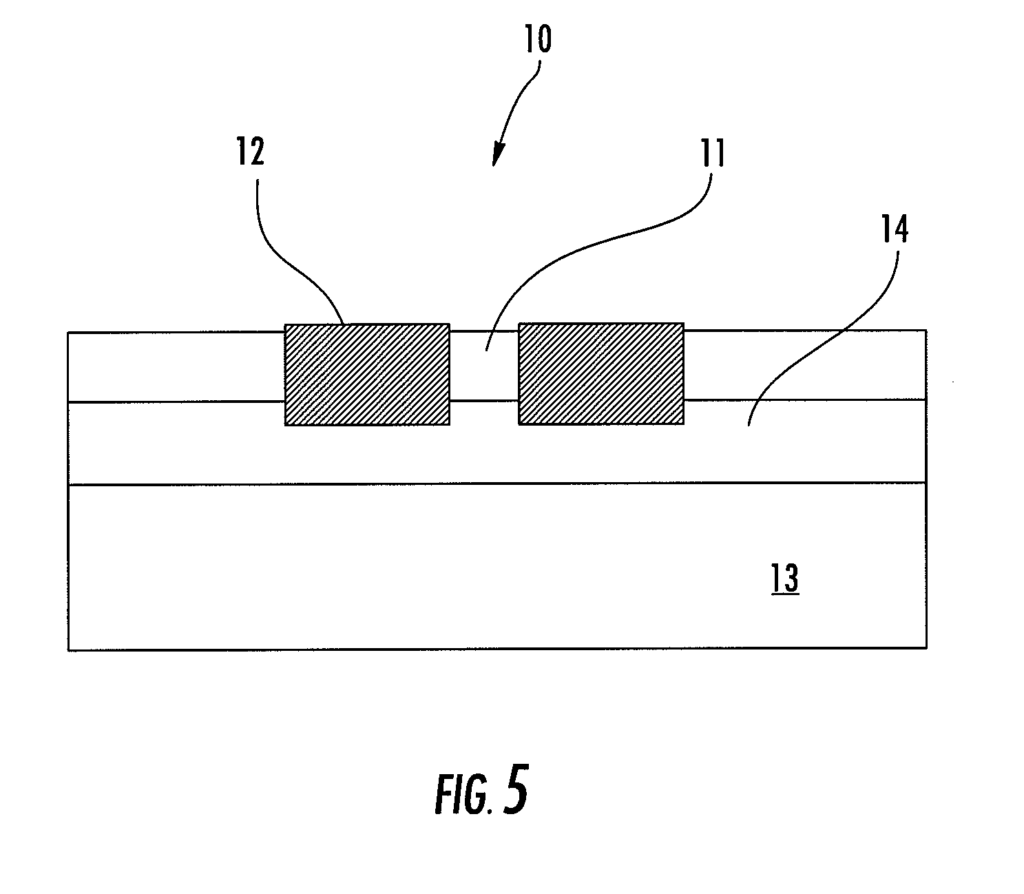
As used in this document, the term “identification device” is defined as: Other devices that benefit from or require printing on or through antimicrobial components or layers may also be included. Plaques, plates, and badges with the indicia 12, the overvarnish 11 or another antimicrobial layer that allows printing are included within the scope of the invention. The identification device can be part of a larger device that has antimicrobial properties. For example, an implant or a personalized article of clothing.
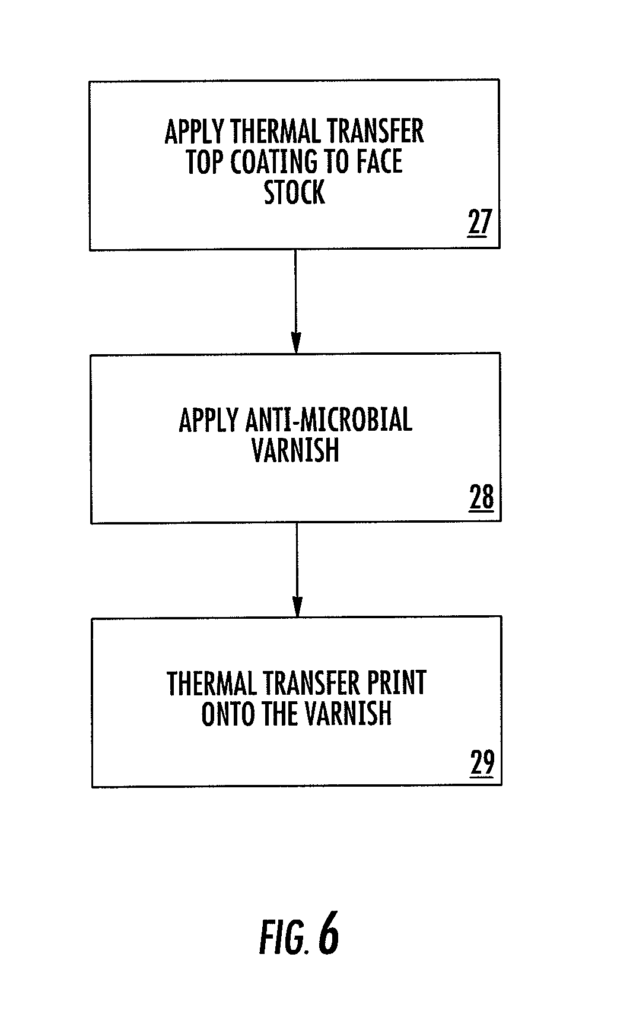
Click here to view the patent on Google Patents.
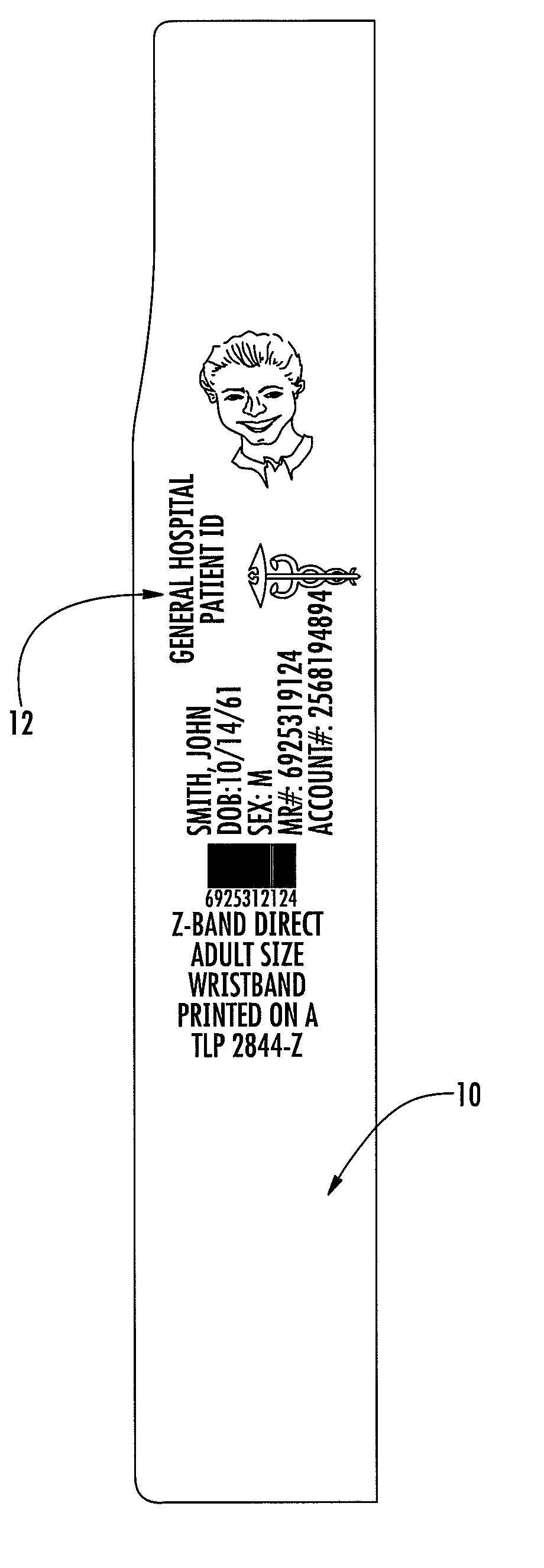
Leave a Reply